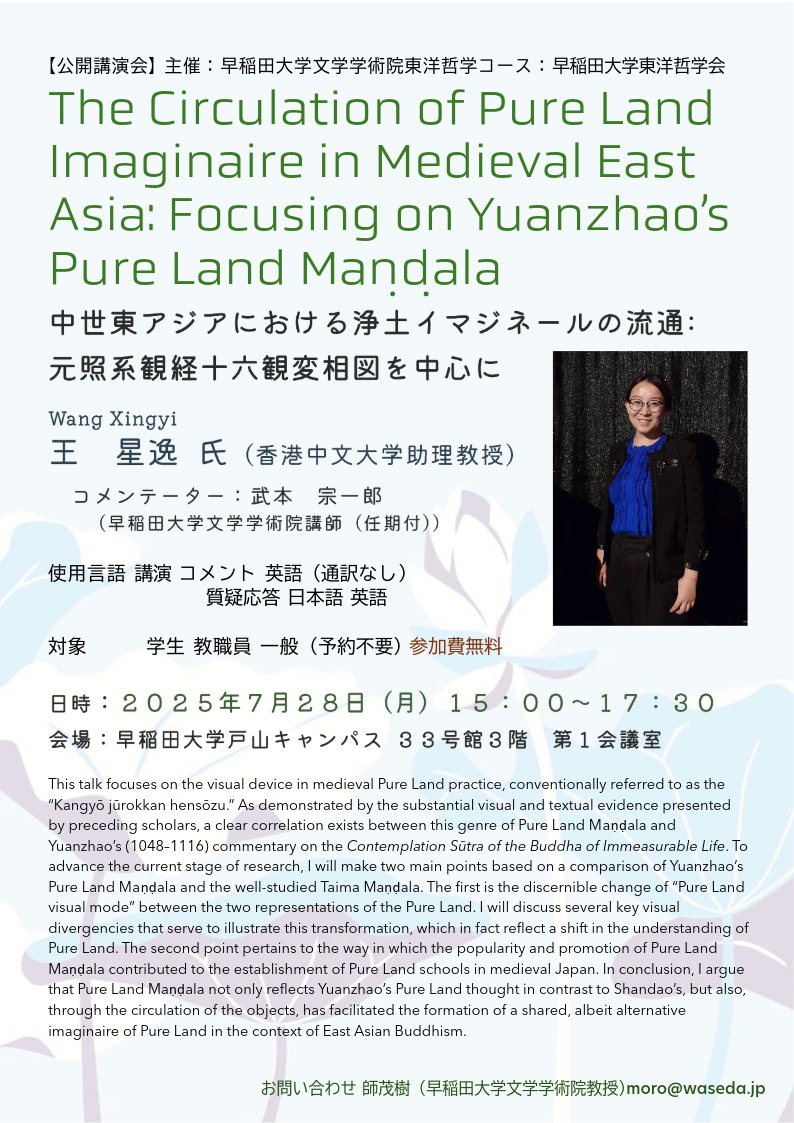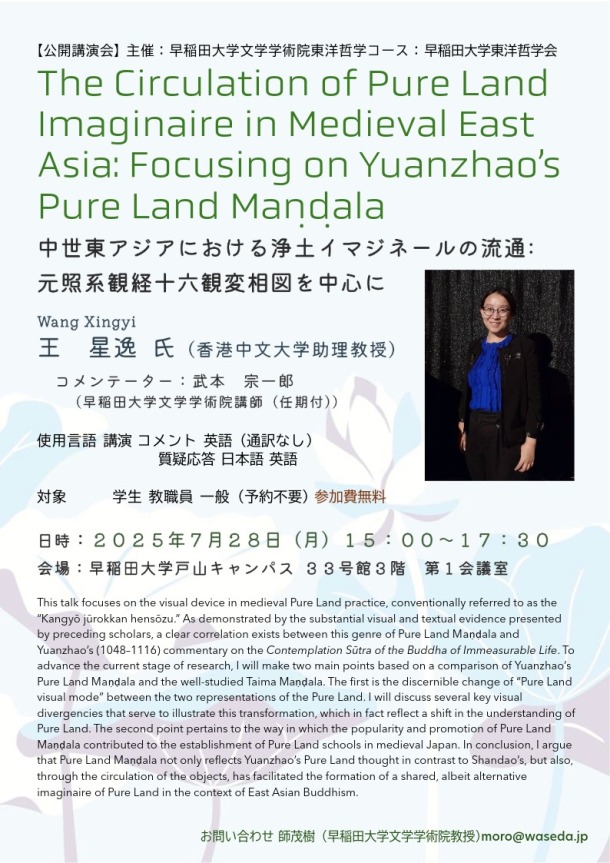- News
- Public lecture (7/28) “The Circulation of Pure Land Imaginaire in Medieval East Asia: Focusing on Yuanzhao’s Pure Land Maṇḍala.”
Public lecture (7/28) “The Circulation of Pure Land Imaginaire in Medieval East Asia: Focusing on Yuanzhao’s Pure Land Maṇḍala.”

Dates
Add to calendar0728
MON 2025- Posted
- 2025年7月2日(水)
Speaker: Dr. Wang Xingyi (Chinese University of Hong Kong)
Commentator: Dr. Takemoto Soichiro (Waseda University)
Date: 15:00–17:30, Monday, July 28, 2025
Venue: Conference Room 1, Building 33, Toyama Campus, Waseda University https://www.waseda.jp/top/en/access/toyama-campus
Language: English, Japanese (Discussion)
Abstract
This talk focuses on the visual device in medieval Pure Land practice, conventionally referred to as the “Kangyō jūrokkan hensōzu.” As demonstrated by the substantial visual and textual evidence presented by preceding scholars, a clear correlation exists between this genre of Pure Land Maṇḍala and Yuanzhao’s (1048–1116) commentary on the Contemplation Sūtra of the Buddha of Immeasurable Life. To advance the current stage of research, I will make two main points based on a comparison of Yuanzhao’s Pure Land Maṇḍala and the well-studied Taima Maṇḍala. The first is the discernible change of “Pure Land visual mode” between the two representations of the Pure Land. I will discuss several key visual divergencies that serve to illustrate this transformation, which in fact reflect a shift in the understanding of Pure Land. The second point pertains to the way in which the popularity and promotion of Pure Land Maṇḍala contributed to the establishment of Pure Land schools in medieval Japan. In conclusion, I argue that Pure Land Maṇḍala not only reflects Yuanzhao’s Pure Land thought in contrast to Shandao’s, but also, through the circulation of the objects, has facilitated the formation of a shared, albeit alternative imaginaire of Pure Land in the context of East Asian Buddhism.

